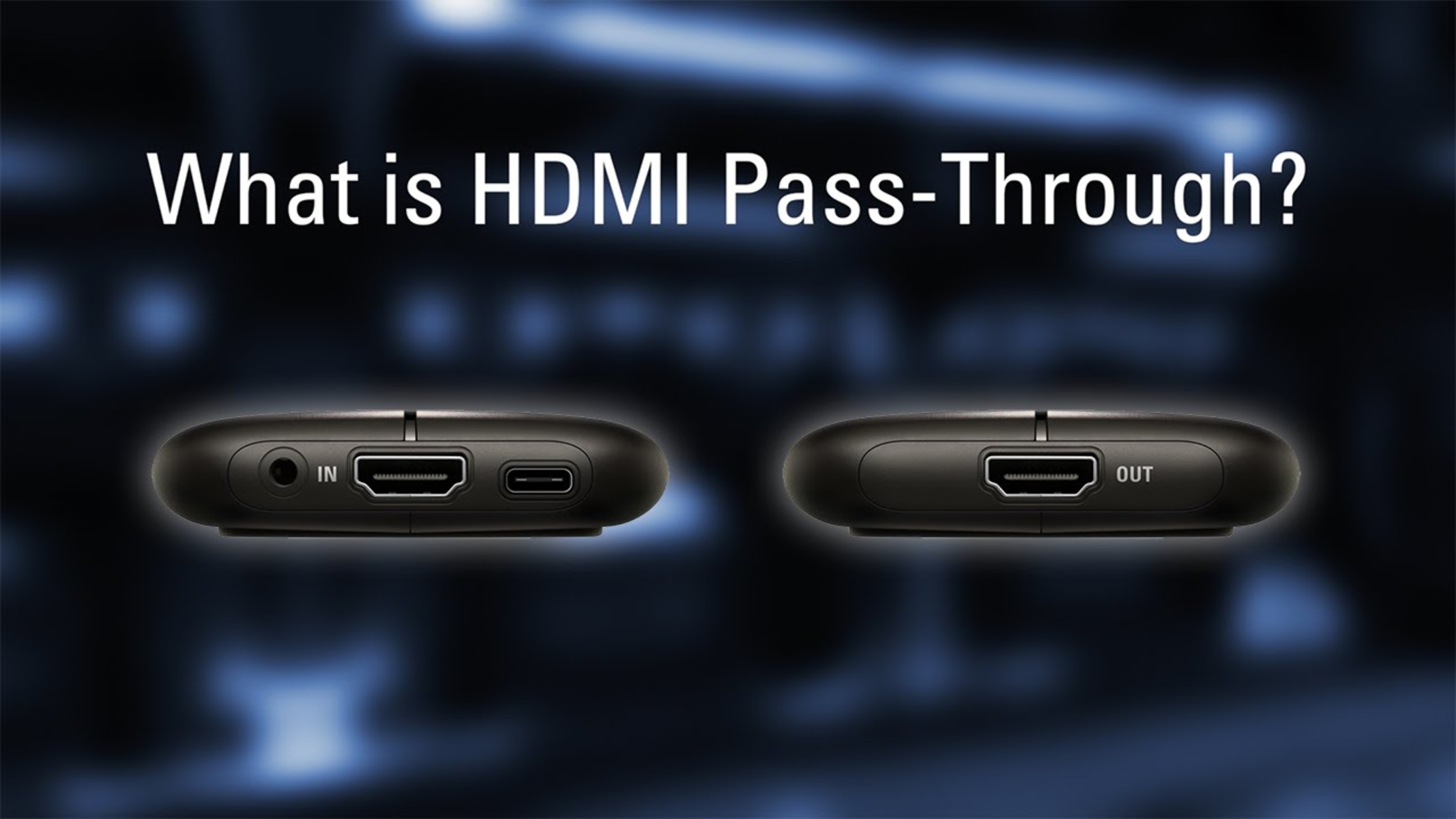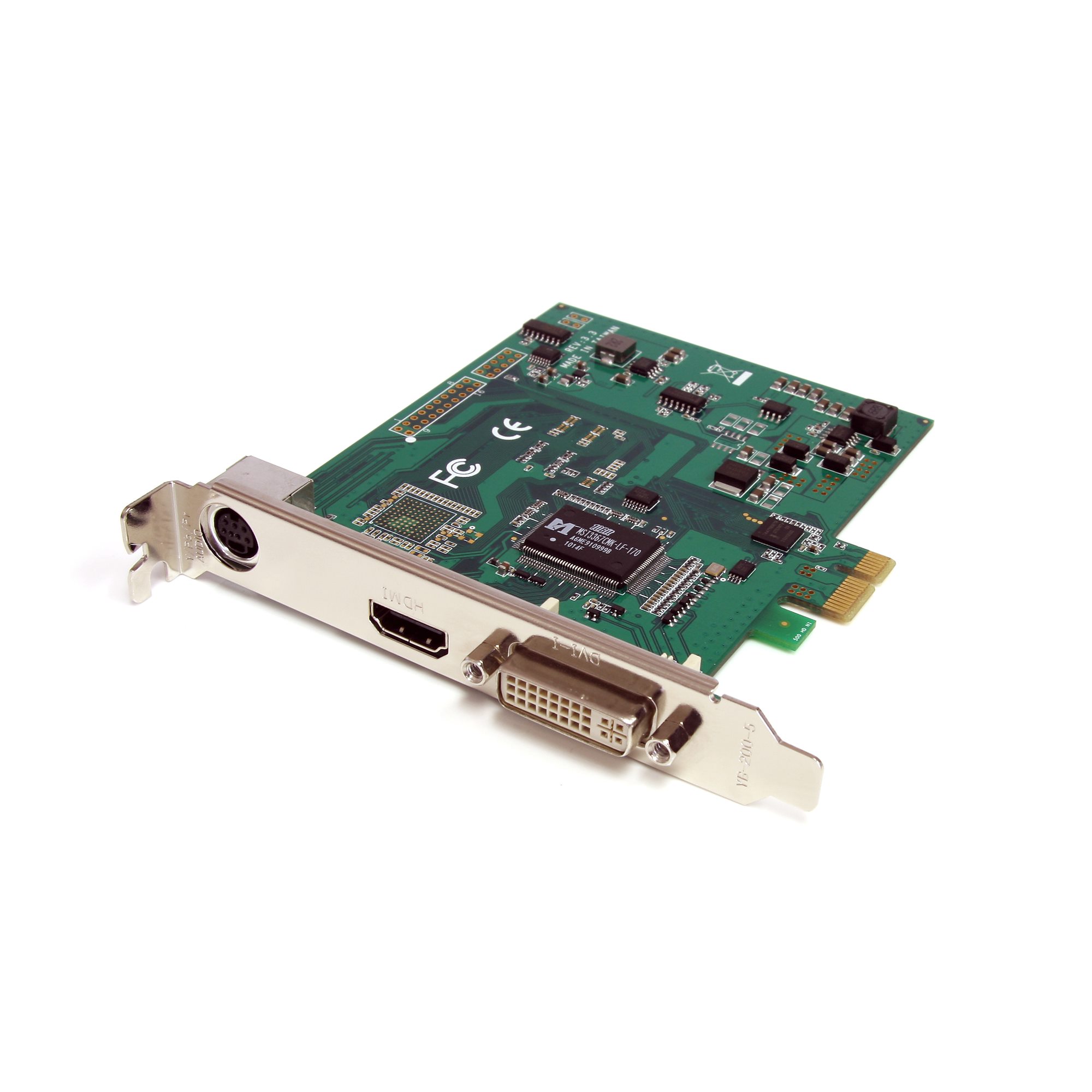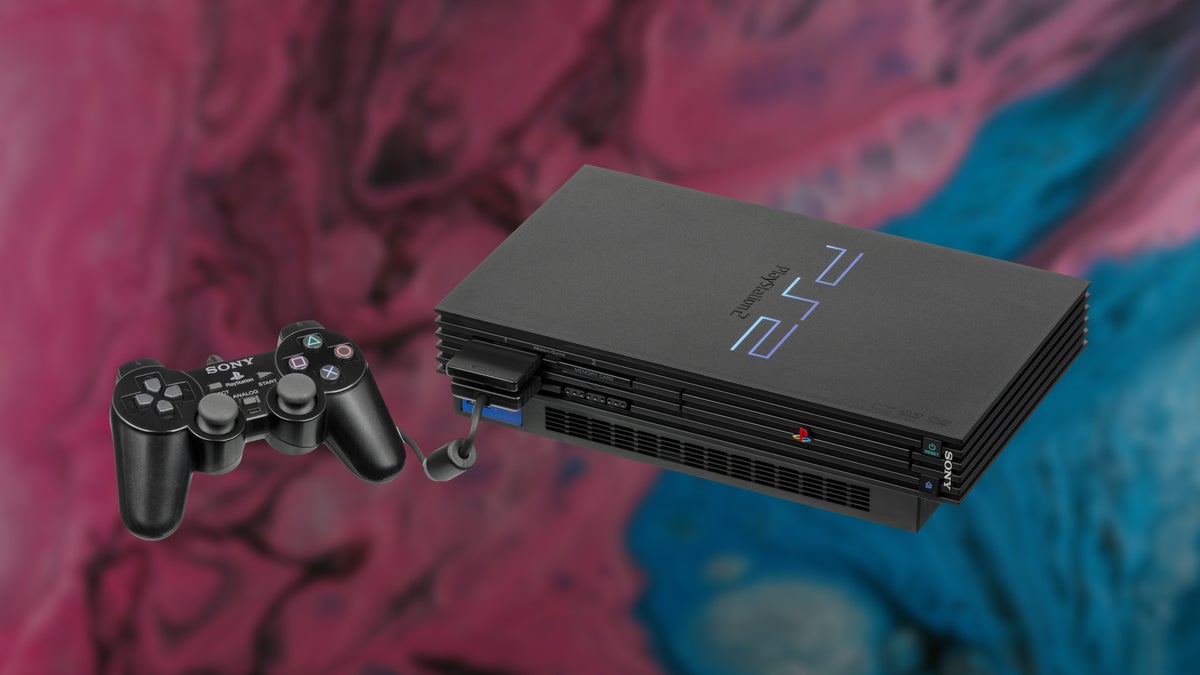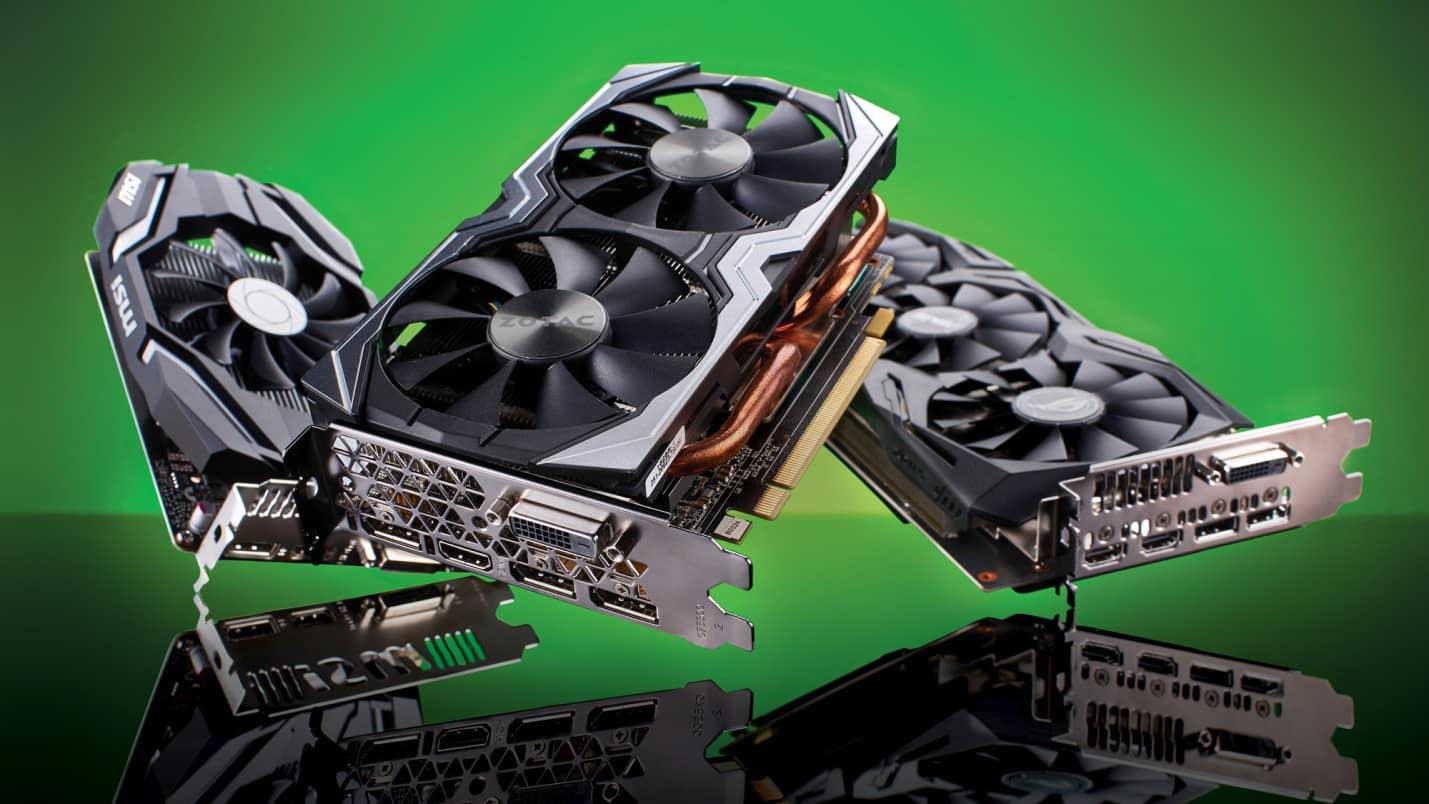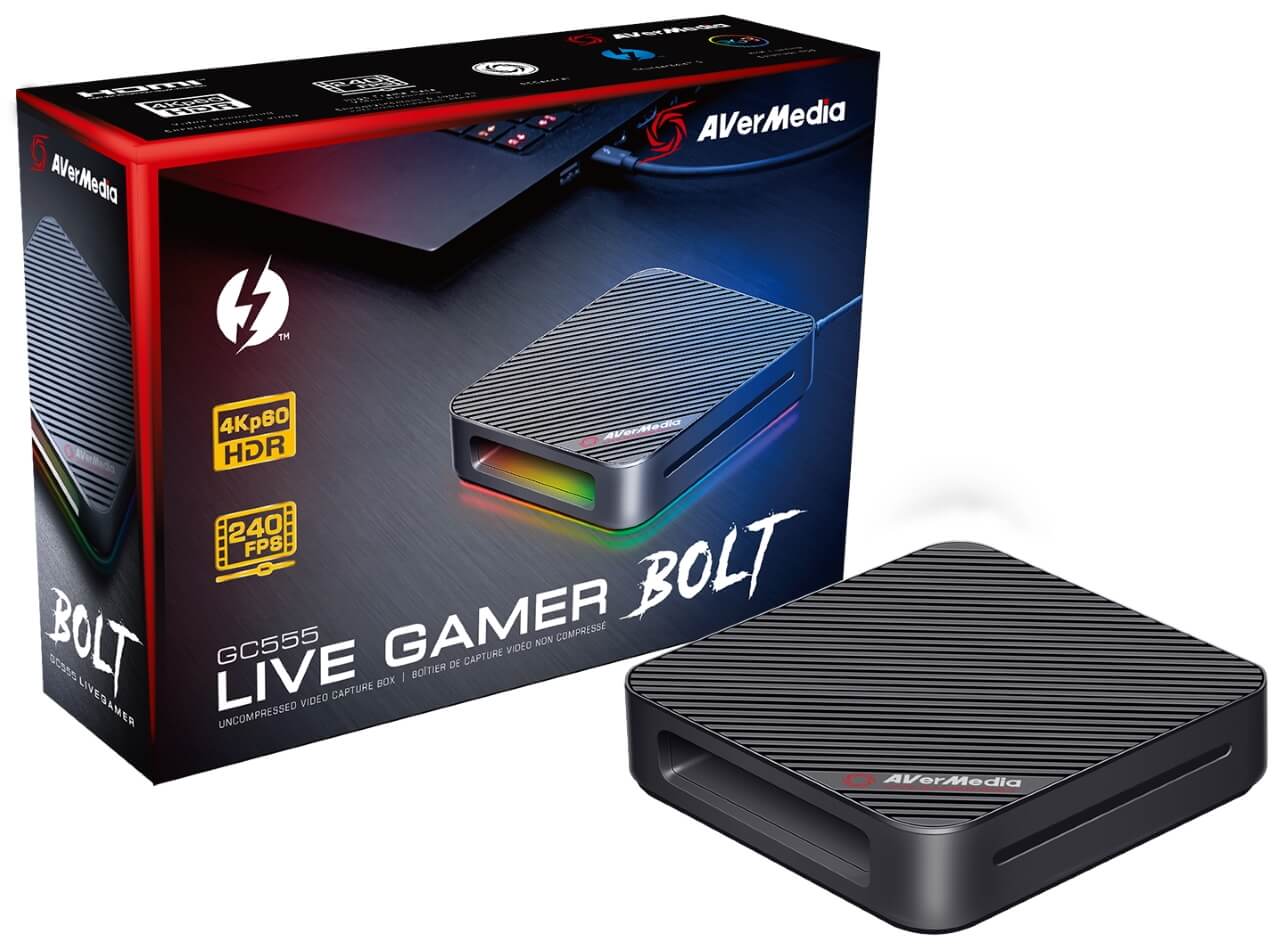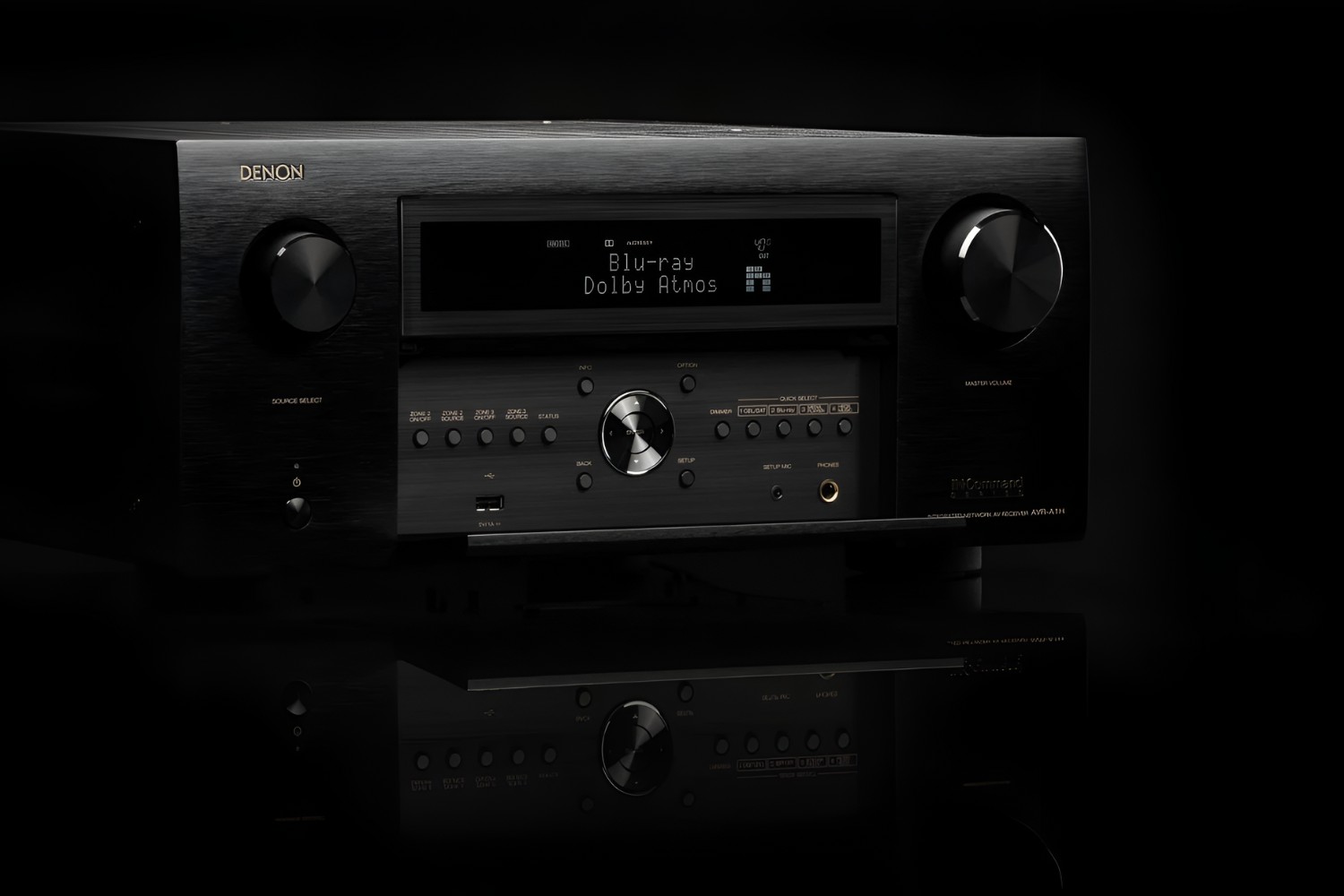Introduction
Welcome to the world of HDMI pass through – a technology that allows for seamless audio and video transmission from one device to another. Whether you’re a tech-savvy individual or just an average consumer, understanding what HDMI pass through is and how it works can greatly enhance your home entertainment experience. In this article, we will explore the ins and outs of HDMI pass through, its benefits, devices that support it, and how to set it up.
HDMI, which stands for High-Definition Multimedia Interface, has become the standard for connecting various multimedia devices such as TVs, gaming consoles, Blu-ray players, and sound systems. It enables the transmission of high-quality audio and video signals through a single cable, eliminating the need for multiple connections and cables cluttering your entertainment center.
However, when you have multiple devices connected to your TV, switching between them while keeping the audio and video signals intact can be a hassle. This is where HDMI pass through comes to the rescue. Essentially, HDMI pass through allows you to connect all your devices to a single device, such as an AV receiver or a soundbar, and seamlessly switch between inputs without losing any quality.
Imagine watching a movie on your Blu-ray player and receiving a call on your gaming console. With HDMI pass through, you can answer the call without interrupting the movie. The audio and video signals will be passed through to your TV while still maintaining the highest possible quality.
Not only does HDMI pass through offer convenience, but it also delivers an improved audio and video experience. By allowing for the direct transmission of uncompressed audio formats like Dolby TrueHD and DTS-HD Master Audio, it ensures a true-to-life sound experience. When it comes to video, HDMI pass through supports high-resolution formats, including 4K Ultra HD and HDR, providing sharp, vibrant visuals.
In the next sections, we will delve deeper into how HDMI pass through works, the benefits it offers, the devices that support it, how to set it up, and its limitations. So, let’s explore the world of HDMI pass through and take your home entertainment to new heights!
What is HDMI Pass Through?
HDMI pass through refers to the ability of a device, typically an AV receiver or a soundbar, to pass a video and audio signal from an HDMI input to an HDMI output without affecting or altering the signal in any way. It acts as a bridge, allowing you to connect multiple HDMI devices to a single device and easily switch between them while maintaining the highest possible audio and video quality.
When you have multiple HDMI devices, such as a gaming console, Blu-ray player, and cable box, connected to your TV, you usually have to switch the input source on your TV every time you want to use a different device. This can be cumbersome and time-consuming. HDMI pass through simplifies this process by letting you connect all your devices to a central device that acts as a hub.
For example, let’s say you have a soundbar with HDMI pass through capabilities. You can connect your gaming console, Blu-ray player, and cable box to the soundbar using HDMI cables. Then, you connect the soundbar to your TV through another HDMI cable. This setup allows you to switch between devices without changing the input source on your TV. You can control everything using the soundbar, and the audio and video signals will be seamlessly passed through to the TV.
HDMI pass through works by analyzing the HDMI signal coming from the connected devices and ensuring it is passed along unchanged. It does not process or alter the signal in any way, so you don’t have to worry about any degradation in quality. The pass through device acts as a conduit, simply transferring the signal from the input to the output without any interference.
This technology is especially useful for home theater setups where you have multiple devices, such as a Blu-ray player, gaming console, and streaming device, all connected to your TV. Instead of constantly switching cables and changing input sources, HDMI pass through allows you to centralize your devices, making it easier to manage and control your home entertainment system.
Whether you’re an avid gamer, a movie enthusiast, or simply want a more streamlined and convenient home entertainment experience, HDMI pass through can greatly enhance your setup. It simplifies the process of switching between devices and ensures you receive the best possible audio and video quality. So, if you’re tired of cable clutter and complex setups, consider incorporating HDMI pass through into your home theater configuration.
How Does HDMI Pass Through Work?
HDMI pass through works by establishing a direct connection between the input and output HDMI ports of a device, allowing the audio and video signals to flow seamlessly from one device to another. It acts as a conduit, transferring the data without any processing or alteration.
When you connect multiple HDMI devices to a pass through-enabled device like an AV receiver or a soundbar, the HDMI pass through feature ensures that the signals coming from each device are transmitted to the output device, such as a TV or a projector, without any loss in quality.
When a signal enters the pass through-enabled device through an HDMI input, the device analyzes the incoming signal to identify the audio and video components. It then sends the data through to the HDMI output without any modification, maintaining the original audio codecs and video resolutions of the source device.
One important aspect of HDMI pass through is that it requires the device to support the specific audio and video formats that are being transmitted. For example, if you have a Blu-ray player connected to an AV receiver with HDMI pass through, the AV receiver must support the audio codecs used by the Blu-ray player, such as Dolby TrueHD or DTS-HD Master Audio, in order to pass them through to the output device.
Additionally, the HDMI pass through feature allows you to switch between different input devices without interrupting the audio and video signals. This means that you can seamlessly transition from watching a movie on your Blu-ray player to playing a game on your gaming console without having to manually switch inputs or reconnect cables.
It’s important to note that HDMI pass through doesn’t necessarily provide any additional features or enhancements to the audio and video signals. Its primary function is to maintain the original quality of the signals and simplify the process of switching between devices.
In summary, HDMI pass through works by establishing a direct connection between HDMI input and output ports, allowing audio and video signals to pass through without any processing or alteration. It enables seamless switching between devices and ensures that the highest quality audio codecs and video resolutions are maintained throughout the transmission.
Benefits of HDMI Pass Through
HDMI pass through offers several benefits that enhance your home entertainment experience and simplify the way you connect and use your multimedia devices. Here are some of the key advantages of utilizing HDMI pass through:
- Streamlined Device Connectivity: One of the main benefits of HDMI pass through is that it allows you to connect multiple HDMI devices to a single device, such as an AV receiver or a soundbar. This eliminates the need for complex cable setups and reduces the clutter of cables behind your TV. With HDMI pass through, you can centralize your devices and enjoy a tidy and organized entertainment center.
- Seamless Device Switching: HDMI pass through makes switching between devices a breeze. Instead of manually changing the input on your TV or reconnecting cables every time you want to switch devices, you can simply use the pass through-enabled device as a hub and control everything from there. Whether you’re switching from your gaming console to your Blu-ray player or from your cable box to your streaming device, HDMI pass through allows for smooth and uninterrupted transitions.
- Preservation of Audio and Video Quality: With HDMI pass through, you can rest assured that the audio and video quality of your devices will not be compromised. The pass through-enabled device acts as a conduit, transferring the audio and video signals without any processing or alteration. This means that you can enjoy the same high-quality audio codecs and video resolutions that your devices support, such as Dolby TrueHD or 4K Ultra HD, without any degradation in quality.
- Enhanced Audio Experience: HDMI pass through supports the transmission of uncompressed audio formats, such as Dolby TrueHD and DTS-HD Master Audio. This ensures a true-to-life sound experience, with rich and immersive audio that brings your movies, games, and music to life. Whether you’re listening to explosions in an action movie or subtle background music in a drama, HDMI pass through delivers high-quality audio that enhances your overall entertainment enjoyment.
- Support for High-Resolution Video Formats: HDMI pass through is compatible with high-resolution video formats, such as 4K Ultra HD and HDR (High Dynamic Range). This means that if your devices and TV support these formats, you can enjoy stunning visuals with sharp details, vibrant colors, and enhanced contrast. Whether you’re watching your favorite movies, playing the latest video games, or streaming content, HDMI pass through ensures that you can experience the full benefits of high-resolution video.
In summary, HDMI pass through offers a range of benefits that improve the way you connect and use your multimedia devices. From simplified device connectivity and seamless switching to the preservation of audio and video quality and support for high-resolution formats, HDMI pass through enhances your home entertainment setup and allows you to enjoy a more immersive and enjoyable audiovisual experience.
Devices that Support HDMI Pass Through
HDMI pass through is a feature commonly found in several devices that are part of your home entertainment setup. These devices act as hubs, allowing you to connect multiple HDMI devices and seamlessly switch between them while maintaining audio and video quality. Here are some of the devices that support HDMI pass through:
- AV Receivers: AV receivers are at the heart of a home theater system, and many modern models support HDMI pass through. These receivers allow you to connect various HDMI devices, such as Blu-ray players, gaming consoles, and streaming devices, and pass the audio and video signals through to your TV. AV receivers with HDMI pass through often have multiple HDMI inputs, making it easy to accommodate all your devices.
- Soundbars: Soundbars have become popular alternatives to traditional surround sound systems due to their sleek design and simplicity. Many soundbars also feature HDMI pass through functionality. You can connect your HDMI devices to the soundbar, and it will pass the signals through to your TV while providing enhanced audio quality. This allows for a more immersive sound experience without the need for separate speakers and complicated wiring.
- Home Theater Systems: Home theater systems, which typically include an AV receiver and speakers, often support HDMI pass through. These systems provide a complete audiovisual solution for your home entertainment needs. By connecting your devices to the home theater system, you can utilize the benefits of HDMI pass through while enjoying surround sound from the speakers.
- Gaming Consoles: Many modern gaming consoles, such as the PlayStation 5 and Xbox Series X, support HDMI pass through. This feature allows you to connect your gaming console to another device, such as an AV receiver or soundbar, and enjoy seamless switching between gaming and other multimedia devices. It also ensures that you can experience the full capabilities of your gaming console, including high-resolution graphics and immersive sound.
- Smart TVs: Some smart TVs also include HDMI pass through functionality. This allows you to connect other HDMI devices directly to your TV and seamlessly switch between them using the TV’s interface. While not all smart TVs have this feature, it can be a convenient option if you have a limited number of devices to connect and want to simplify your setup.
It’s important to note that not all devices within the same category will necessarily support HDMI pass through. When purchasing a device, ensure that it explicitly mentions HDMI pass through as a supported feature. Additionally, check the number of HDMI inputs available on the device to ensure it can accommodate all your connected devices.
Overall, the availability of HDMI pass through in a variety of devices gives you flexibility when it comes to integrating your home entertainment system. Whether it’s an AV receiver, a soundbar, a gaming console, or even a smart TV, having HDMI pass through support allows for a more streamlined and convenient experience, simplifying the way you connect and use your multimedia devices.
How to Set Up HDMI Pass Through
Setting up HDMI pass through involves connecting your HDMI devices to a device with HDMI pass through capabilities, such as an AV receiver or a soundbar. Here’s a step-by-step guide on how to set up HDMI pass through:
- Identify the pass through-enabled device: Determine which device you will use as the central hub for your HDMI devices. This can be an AV receiver, a soundbar, or any other device that supports HDMI pass through.
- Identify the input and output ports: On the pass through-enabled device, identify the HDMI input and output ports. The HDMI inputs are where you will connect your source devices (e.g., gaming console, Blu-ray player), and the HDMI output is where you will connect your TV or display.
- Connect the HDMI cables: Take an HDMI cable and connect one end to the HDMI output port of the pass through-enabled device. Connect the other end of the cable to the HDMI input port of your TV or display.
- Connect your source devices: Take additional HDMI cables and connect one end of each cable to the HDMI input ports of your source devices. Connect the other end of each cable to the available HDMI input ports on the pass through-enabled device.
- Ensure proper source device settings: On each source device, navigate to the settings menu and ensure that the HDMI output is selected as the audio and video output option. This will ensure that the audio and video signals from the source devices are properly transmitted through the HDMI pass through.
- Power on the devices: Power on all the connected devices, including the pass through-enabled device, the source devices, and the TV or display.
- Select the desired input: Use the remote control or interface of the pass through-enabled device to select the desired source device. This will allow you to switch between devices and have the audio and video signals pass through to the TV or display seamlessly.
It’s worth noting that the specific setup process may vary slightly depending on the devices and their interfaces. Always refer to the user manuals or manufacturer’s instructions for detailed guidance on setting up HDMI pass through for your specific devices.
Remember, HDMI pass through requires the devices involved to support the desired audio and video formats. This means that the pass through-enabled device and the source devices need to be compatible with the audio codecs and video resolutions being used. Check the specifications of each device to ensure their compatibility.
By following these steps and ensuring proper connections and settings, you can successfully set up HDMI pass through and enjoy seamless switching between your HDMI devices while maintaining the highest possible audio and video quality.
Limitations of HDMI Pass Through
While HDMI pass through offers many benefits, it’s important to be aware of its limitations. Understanding these limitations can help you make informed decisions when configuring your home entertainment setup. Here are some of the common limitations of HDMI pass through:
- Compatibility: HDMI pass through requires both the pass through-enabled device and the connected source devices to be compatible with the same audio and video formats. If a device does not support the specific format being transmitted, it may not pass through the signal, or the compatibility might be limited. It’s crucial to check the compatibility of all devices involved before setting up HDMI pass through.
- Audio and Video Processing: HDMI pass through does not allow for audio or video processing. The audio and video signals are simply transferred from the input source to the output device without any modification. This means that any audio or video enhancements, such as audio upscaling or picture adjustments, may need to be performed separately by the connected devices or the display itself.
- Signal Loss and Degradation: While HDMI pass through aims to maintain the original audio and video quality, there might still be a slight loss or degradation in the signal due to the transfer process. Factors such as cable quality, cable length, and environmental interference can impact the signal quality. Using high-quality HDMI cables and keeping cable lengths within recommended limits can help minimize signal loss and degradation.
- Limitation on Simultaneous Connections: Some HDMI pass through-enabled devices may have limitations on the number of devices that can be simultaneously connected and switched between. For example, an AV receiver might only support a certain number of HDMI inputs. If you have more devices than the available inputs, you might need an HDMI switch or additional pass through-enabled devices to accommodate all of your devices.
- No Control of Source Devices: HDMI pass through does not provide control over the connected source devices. While you can switch between devices using the pass through-enabled device, you cannot control the functions or settings of the source devices directly through the pass through device. To control individual source devices, you will need to use their respective remotes or interfaces.
Understanding and considering these limitations can help you plan and configure your HDMI pass through setup accordingly. It’s important to evaluate your specific needs and consider alternative solutions if certain limitations significantly impact your desired home entertainment experience.
Always consult the user manuals and documentation of your devices for specific details on their limitations and recommended setups when using HDMI pass through. Additionally, staying up to date with the latest firmware updates for your devices can help address any compatibility or performance issues that might arise.
By being aware of the limitations of HDMI pass through and setting realistic expectations, you can still benefit from the convenience and enhanced audiovisual experience it offers while working within its constraints.
Conclusion
HDMI pass through is a valuable technology that simplifies the way we connect and use our multimedia devices, offering a range of benefits for home entertainment setups. By allowing seamless switching between multiple HDMI devices and maintaining audio and video quality, HDMI pass through enhances the overall viewing and listening experience.
We explored what HDMI pass through is and how it works, understanding that it acts as a bridge between input and output devices to transmit audio and video signals without alteration. The benefits of HDMI pass through are numerous, including streamlined device connectivity, seamless switching, preservation of audio and video quality, enhanced audio experience, and support for high-resolution video formats.
We also examined devices that support HDMI pass through, such as AV receivers, soundbars, gaming consoles, smart TVs, and home theater systems. These devices act as central hubs, enabling the connection of multiple HDMI devices and providing a convenient way to switch between them while maintaining signal integrity.
Setting up HDMI pass through requires connecting devices with HDMI cables, ensuring proper settings on source devices, and selecting the desired input through the pass through-enabled device. Although HDMI pass through has its limitations, such as compatibility constraints and signal loss, being aware of these limitations can help you make informed decisions and mitigate any potential issues.
In conclusion, HDMI pass through is a valuable feature that simplifies and enhances the way we enjoy our home entertainment systems. By providing seamless switching, maintaining audio and video quality, and supporting high-resolution formats, HDMI pass through offers a convenient and immersive audiovisual experience. Whether you’re a movie enthusiast, gamer, or simply looking to declutter your entertainment setup, HDMI pass through can be a valuable addition to your home theater configuration.







